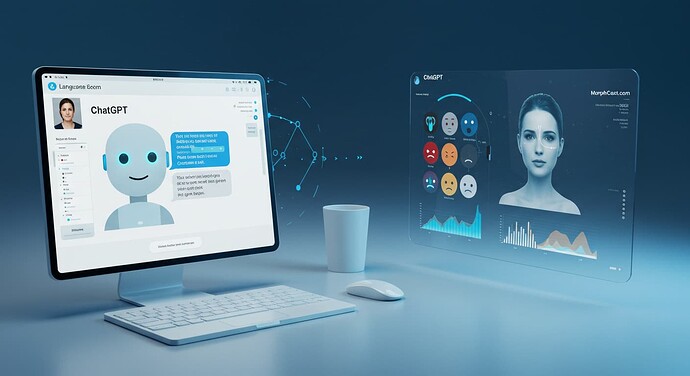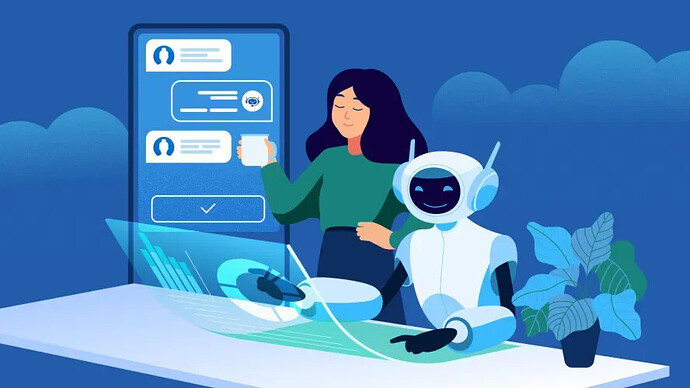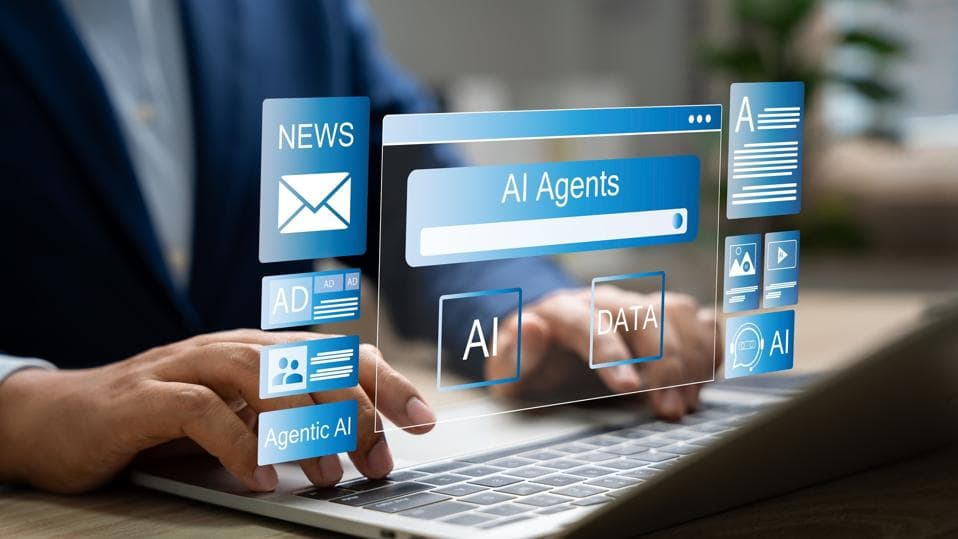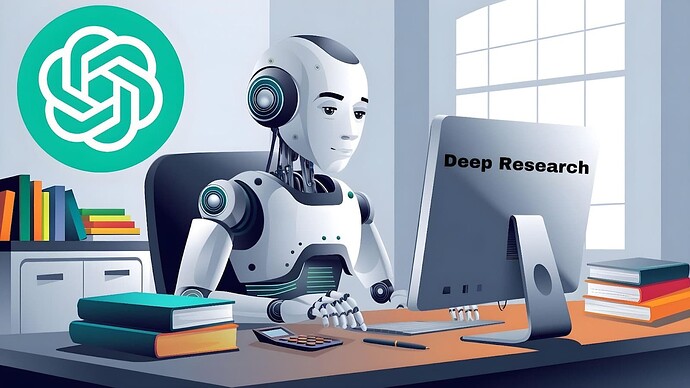Artificial intelligence has made significant strides in recent years, with various AI agents emerging to perform a wide array of tasks. Among these, ChatGPT stands out for its advanced language processing capabilities, allowing it to handle complex conversational tasks with relative ease. However, not all AI agents exhibit the same level of proficiency, leading to questions about why some struggle with tasks that ChatGPT manages effectively. This exploration delves into the underlying factors that contribute to these discrepancies, examining the architecture, training, application context, and limitations of different AI systems.
1. Differences in Architecture
The architecture of an AI model significantly impacts its performance and capabilities.
a. Model Design
ChatGPT is based on the Generative Pre-trained Transformer (GPT) architecture developed by OpenAI. This architecture utilizes a transformer model, which excels in understanding context, managing relationships within text, and generating coherent and contextually relevant responses. The design allows for the processing of large amounts of text in parallel, making it efficient for conversational tasks.
In contrast, many other AI agents rely on simpler architectures that may not leverage the same level of complexity. For example, rule-based systems or earlier AI models may focus on fixed responses or keyword matching. These systems often lack the ability to understand nuance or context, leading to difficulties in handling tasks that require a more sophisticated approach.
b. Training Methodology
The training methodology also plays a crucial role in determining an AI agent’s effectiveness. ChatGPT undergoes extensive pre-training on diverse datasets, covering a wide range of topics and conversational styles. This comprehensive training equips it with a broad understanding of language and context, enabling it to generate relevant and coherent responses across various subjects.
Other AI agents may not benefit from such extensive training. Some might be trained on narrower datasets, limiting their exposure to diverse language patterns and topics. This restricted training can hinder their ability to engage in meaningful conversations or handle complex queries effectively.
2. Scope of Knowledge
The scope of knowledge that an AI agent possesses affects its performance in specific tasks.
a. Knowledge Base
ChatGPT is designed to access a vast knowledge base, allowing it to provide information on a wide range of topics. Its ability to generate responses is not confined to pre-programmed data but rather draws from the rich context it has learned during training. This extensive knowledge enables ChatGPT to provide accurate and informative answers, even to nuanced questions.
Many other AI agents, particularly those focused on specialized tasks, may have a limited knowledge base. For example, an AI developed for customer service in a specific industry might only be trained on that industry’s terminology and common inquiries. While it may excel in its niche, it can struggle with broader questions or general knowledge tasks that fall outside its training scope.
b. Static vs. Dynamic Learning
ChatGPT’s architecture allows it to adapt dynamically based on user interactions, drawing on its extensive training to respond to contextually relevant inquiries. This dynamic learning capability enables it to maintain coherence in conversations, even when topics shift or evolve.
In contrast, many traditional AI agents operate on a static learning model. Once they are trained, their responses and behaviors do not evolve based on new data or interactions. This rigidity can lead to challenges when faced with unexpected queries or complex conversational dynamics.
3. Contextual Understanding
Contextual understanding is a critical component of effective communication, and it varies significantly among different AI agents.
a. Understanding Nuance
ChatGPT excels at understanding nuances in language, including idiomatic expressions, humor, and sarcasm. This capability allows it to generate responses that are contextually appropriate and relatable. For instance, when a user employs humor or references cultural phenomena, ChatGPT can often respond in kind, enhancing the conversational experience.
Many AI agents, particularly those that rely on simpler algorithms, may struggle with these nuances. They might interpret language literally, leading to misunderstandings or irrelevant responses. Such limitations can undermine the effectiveness of AI agents in tasks that require a deeper understanding of human communication.
b. Managing Context Over Time
ChatGPT is designed to manage context over extended conversations, keeping track of previous exchanges and maintaining coherence. This capacity is essential for meaningful dialogue, as it allows the AI to reference prior statements and respond in a way that feels fluid and natural.
In contrast, other AI agents may have limited memory or context management capabilities. Some might reset after each interaction, failing to retain information from previous exchanges. This lack of continuity can result in disjointed conversations, where the AI fails to connect relevant information or follow up on previous topics effectively.
4. Application Domains
The specific application domain of an AI agent can significantly influence its performance.
a. Specialized vs. Generalized Tasks
Many AI agents are designed for specialized tasks, such as data analysis, scheduling, or technical support. While they may excel in their designated fields, their focus can limit their ability to handle broader conversational tasks. For example, an AI built for technical troubleshooting might provide excellent support for specific software issues but struggle to engage in casual conversation or answer general knowledge questions.
ChatGPT, in contrast, is a generalized conversational agent. It is not confined to a single domain and can engage in discussions across various topics, from casual banter to complex inquiries. This versatility is a key factor in its ability to handle diverse tasks effectively.
b. User Expectations and Interaction Styles
User expectations also play a role in how AI agents are received and evaluated. Users interacting with ChatGPT often anticipate a conversational partner capable of engaging in meaningful dialogue. This expectation shapes how users frame their inquiries and how they evaluate the AI’s performance.
On the other hand, users of specialized AI agents may have different expectations based on their specific purposes. When interacting with a customer service chatbot, users may prioritize quick, accurate responses to specific queries rather than engaging in extended conversation. This difference in expectations can influence perceptions of effectiveness and satisfaction.
5. Limitations of AI Technology
Despite significant advancements, AI technology still faces inherent limitations that can affect the performance of various agents.
a. Lack of Common Sense Reasoning
AI agents, including those based on advanced models like ChatGPT, often struggle with common sense reasoning. While they can generate plausible-sounding responses, they may lack the underlying understanding of real-world logic that humans take for granted. This limitation can lead to responses that seem logical in context but fail to align with practical realities.
For instance, an AI agent might generate a response that is technically correct but misses the broader context or implications of a question. Traditional AI agents that rely on rule-based systems may also exhibit similar shortcomings, as they often lack the flexibility to adapt to varying scenarios.
b. Ethical and Bias Concerns
AI agents, including ChatGPT, can inadvertently reflect biases present in their training data. If the training dataset contains biased information, the AI may generate responses that perpetuate these biases. This issue is particularly pronounced in sensitive topics such as race, gender, and culture, where nuanced understanding is crucial.
While developers strive to mitigate these biases, the challenge remains. Other AI agents may not have the same level of scrutiny applied to their training data, leading to potential ethical concerns when they generate responses. This inconsistency can affect user trust and satisfaction.
6. User Interface and Experience
The user interface and experience significantly impact how users interact with AI agents, influencing their perceptions of effectiveness.
a. Conversational Interfaces
ChatGPT operates through conversational interfaces that facilitate natural dialogue. Users can type or speak their queries, and the AI responds in a manner that mimics human conversation. This intuitive interface enhances user engagement and encourages more dynamic interactions.
Other AI agents might employ less interactive interfaces, limiting user engagement. For example, a traditional chatbot may present users with fixed menus or options, restricting the flow of conversation. This rigidity can lead to frustration, particularly when users seek more personalized or nuanced responses.
b. Feedback Mechanisms
The ability to provide feedback is crucial for improving interactions with AI agents. ChatGPT often incorporates feedback mechanisms that allow users to rate responses or flag inaccuracies. This feedback loop enables developers to refine the AI’s performance over time, enhancing its accuracy and relevance.
Many traditional AI agents lack robust feedback mechanisms. Users may find it challenging to communicate their needs or concerns effectively, leading to stagnation in the agent’s development. This lack of responsiveness can hinder the AI’s ability to adapt and improve based on user interactions.
7. Deployment and Integration
The deployment and integration of AI agents within existing systems can also affect their performance and usability.
a. Ease of Integration
ChatGPT and similar AI agents often integrate seamlessly into various applications and platforms. Their versatility allows developers to embed them into websites, messaging apps, and customer service portals with relative ease. This flexibility enhances their usability, making them accessible to diverse user bases.
Conversely, other AI agents may require extensive customization or integration efforts. For example, a specialized AI developed for a specific industry might necessitate significant technical resources for deployment. This complexity can limit its accessibility and hinder widespread adoption.
b. Real-Time Performance
Real-time performance is a critical factor in user satisfaction. ChatGPT operates in real-time, providing instantaneous responses that foster engaging interactions. This immediacy enhances the overall user experience, allowing for fluid conversations.
Some traditional AI agents may experience latency issues, resulting in delays that disrupt the flow of interaction. Users expect prompt responses, and any lag can lead to frustration and disengagement. Ensuring real-time performance is essential for maintaining user satisfaction.
8. The Future of AI Agents
The landscape of AI agents continues to evolve, driven by advancements in technology and changing user expectations. Recognizing the differences between ChatGPT and other AI agents provides insights into future developments.
a. Continuous Improvement
As AI technology advances, continuous improvement will be a hallmark of successful agents. Developers will focus on enhancing the capabilities of AI agents, integrating advanced machine learning techniques, and refining training methodologies. This commitment to improvement will ensure that AI agents can handle an increasingly diverse range of tasks.
b. Greater Customization
Future AI agents are likely to offer greater customization options, allowing organizations to tailor their capabilities to specific needs. This adaptability will enable AI agents to excel in specialized domains while maintaining the versatility required for general conversational tasks.
c. Ethical Development
The focus on ethical AI development will become paramount as the technology matures. Developers will prioritize transparency, fairness, and accountability in AI systems, ensuring that they align with societal values and expectations. This commitment will foster trust among users and contribute to the responsible deployment of AI agents.
Bottom Words
The differences between AI agents, such as ChatGPT, and traditional software reveal the complexities of AI technology and its applications. While ChatGPT excels in handling conversational tasks due to its advanced architecture, extensive training, and contextual understanding, many other AI agents struggle with similar tasks due to limitations in design, knowledge, and adaptability.
Understanding these factors is crucial for organizations seeking to leverage AI technology effectively. As the landscape of AI continues to evolve, ongoing advancements in architecture, training methodologies, and ethical considerations will shape the future of AI agents. By recognizing the strengths and limitations of various AI systems, developers and organizations can work toward creating more effective, user-friendly, and ethically responsible AI solutions. This ongoing journey will undoubtedly lead to a more sophisticated and capable generation of AI agents, enhancing their utility across diverse applications and industries.



